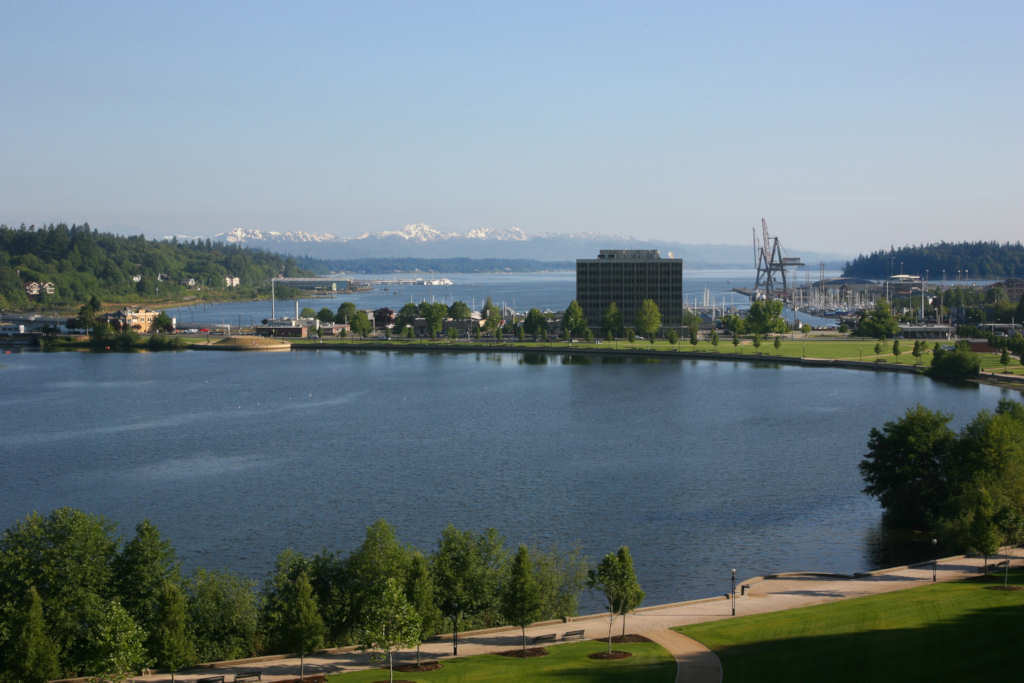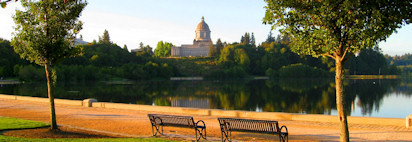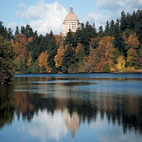Summary Findings & Recommendations - CLIPA White Paper (part 1)
Managing Capitol Lake as a central design element of the Washington State Capitol Campus and the surrounding communities has become a focused discussion, and deservedly so as the treasured icon of our state.
Executive Summary - Findings
The Washington State Department of General Administration (GA) has the responsibility from the State Legislature to manage Capitol Lake as part of the Capitol Campus Grounds “as a lake” (see RCW references). However, since 1986 the State has not acted on the mandate to provide stewardship, preservation and maintenance of this public asset with respect to carrying out a maintenance dredging program. We applaud the State and GA for many beneficial improvements around Capitol Lake. However, immediate funding is needed to restore the lake through dredging.
The purpose of this White Paper and attached Maintenance Plan and Financial Projections is to strongly advocate for the State to actively carry out its mandate, providing for a more comprehensive, responsive, and sustained management of Capitol Lake and the adjacent marine water areas of lower Budd Inlet. These areas require a dredging and maintenance plan as a part of a publicly approved management program. This program also must consider the larger Deschutes Watershed ecosystem, and the priorities of the surrounding communities.
By collaborating with public and private partners, we believe these goals are very achievable through innovative watershed-wide ideas and solutions.
A recent GA advisory committee ("CLAMP") focused its efforts on exploring the option of reverting the Capitol Lake area to a tidal mud flat over the next 50 to 80 years. The advisory committee recommended (on a split vote) to remove the dam that separates Capitol Lake from lower Budd Inlet and proceed with an estimated $250-$300 million project, including removal of the dam, building a new 5th Avenue bridge and many other costly changes. The value of this work even within the limited scope of the CLAMP study highlights for the community how the lack of attention to the Deschutes Watershed and Capitol Lake environment has led to systemic degradation of Capitol Lake, the larger ecosystem, and valued community uses of the area.
While the CLAMP study suggested that reverting to tidal mud flats may provide water quality benefits for lower Budd Inlet, it failed to address the underlying problems and the need for an overall management of the Deschutes Watershed as part of a comprehensive and long-term strategy for both water quality and sediment management.
Also worrisome is that the CLAMP study did not fully acknowledge the extensive public investments in making the Olympia waterfront a multiple purpose environment. These investments accommodate not only the Capitol Campus and its aesthetics, but also recreational uses as well as residential, business, and urban watershed interests. It is a place where people come to live, work, and play.
The effects of the CLAMP study’s recommended plan are irreversible. It has the potential of destroying the design of the Capitol Campus, and of seriously undermining the aesthetic appeal and viability of the Olympia waterfront and the economic and social vitality of Olympia's city center.
The call to action is compelling. As a result of the growing problems and controversy surrounding the future of Capitol Lake, a consortium of community organizations and citizens with diverse interests and expertise have joined together to form the "Capitol Lake Improvement and Protection Association" (CLIPA). CLIPA is a grassroots non-profit organization dedicated to saving Capitol Lake. In this packet we present a scientifically-based policy and operations strategy that reflects a broad-based community and urban watershed interest.
Executive Summary - Recommendations
- Immediate investment: CLIPA estimates a minimum initial expenditure of about $4.5 million will address the accumulated sediment build-up and begin to reverse the damage to the surrounding environment caused by almost 25 years of neglect. We advocate for a plan in the first biennium that will initiate a positive and environmentally sensitive management program that considers both the urban and the ecosystem benefits.
- Joint coordination: CLIPA also recommends an interest-based “coordinating board” be formed and authorized to develop a long-term maintenance and public/private financing plan to maintain Capitol Lake as it was envisioned by the Wilder and White Plan of 1911, and coordinate a proactive management approach for the Deschutes Watershed as a whole.
- Broaden focus to watershed for improved water quality: The CLIPA findings support more effective management of the upper Deschutes Watershed to address water quality issues including: dissolved oxygen, temperature, nutrient loading, sediment control, and removal of point discharges of other contaminants. Invasive species, such as the New Zealand mud snail (prominent in many west coast bays and estuaries) will continue to be a challenge throughout the life of the watershed, regardless of the alternative chosen for the Deschutes Watershed, and must be dealt with as a current management issue and not a short-term cause to modify the long-term plan as suggested by the CLAMP study. 1
- Proactive lake management: We recommend the State move forward with a revisioning plan for Capitol Lake, one that takes into account the aesthetic value of the lake for the Capitol Campus as well as the explicit management of this urban lake for water quality, sediment management, recreation, and other valued uses. The immediate maintenance dredging of Capitol Lake and continued use of the lake as a “sediment trap” for the estimated 35,000 cubic yards of annually transported runoff sediment from the upper Deschutes Watershed is the most cost-effective and environmentally sensitive management program for this urban landscape.
- Long-term sustainable approach: CLIPA has developed and is recommending a two, ten and fifty-year management program for consideration by the General Administration, the State Capitol Committee, the State Legislature, and affected local governments to consider as an immediate approach to address the need to manage our shared Capitol Lake and marine waterfront. The actions we take now will impact many future generations.
Summary Findings & Recommendations - CLIPA White Paper
by: CLIPA Capitol Lake Improvement & Protection Assn.Executive summary of findings & recommendations, part of the CLIPA White Paper, a plan for ongoing management of Capitol Lake in Olympia, Wa.


